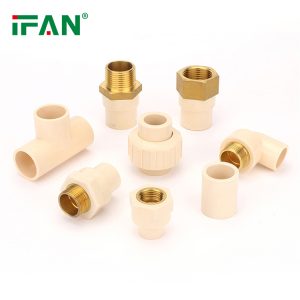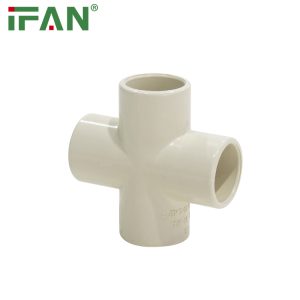Description
IFAN factory 30+ years manufacture experience support color /size customization support free sample.Welcome to consult for catalog and free samples.This is our Facebook Website:www.facebook.com,Click to watch IFAN’s product video.Compared with Tomex products, our IFAN products from quality to price are your best choice, welcome to buy!
Joining CPVC (Chlorinated Polyvinyl Chloride) fittings effectively is crucial for creating reliable plumbing systems. The process involves specific techniques and materials that ensure strong, leak-proof connections. This guide provides a comprehensive overview of the steps necessary to successfully join CPVC fittings, ensuring durability and performance in various applications.
1. Understanding CPVC Fittings
CPVC fittings are widely used in residential and commercial plumbing due to their high resistance to heat and corrosion. Commonly found in hot and cold water distribution systems, these fittings come in various shapes and sizes, including elbows, tees, and couplings. Before beginning the joining process, it’s essential to familiarize yourself with the types of fittings you will be using and their specific applications. This knowledge helps in selecting the right fitting for your project, ensuring compatibility with existing pipes and systems.
2. Preparing the Materials
Preparation is key to successful joining. Start by gathering all necessary materials, including CPVC fittings, CPVC pipe, primer, solvent cement, a measuring tape, a pipe cutter, and deburring tools. Ensure that the fittings and pipes are clean and free of dust or debris to facilitate a strong bond. Use a measuring tape to cut the CPVC pipe to the desired length using a pipe cutter, which provides a clean, straight edge. After cutting, deburr the edges to remove any sharp bits that could affect the seal.

3. Applying Primer and Solvent Cement
The next step involves applying primer and solvent cement. Begin by applying a liberal amount of primer to both the outside of the CPVC pipe and the inside of the fitting. The primer softens the surface of the CPVC, preparing it for bonding. Allow the primer to dry briefly; this usually takes only a minute. Following the primer application, apply an even coat of solvent cement to the same areas. It’s important to work quickly, as solvent cement begins to set rapidly. Make sure to use cement that is specifically designed for CPVC, as other types may not provide the necessary bond strength.
4. Joining the Fittings
Once the primer and solvent cement are applied, it’s time to join the fittings. Insert the pipe into the fitting, making sure to push it all the way in until it reaches the bottom of the socket. A slight twist during insertion can help distribute the cement evenly. Hold the joint firmly for about 30 seconds to allow the cement to set without moving. This initial holding period is crucial, as it ensures that the connection is secure and reduces the risk of misalignment.

5. Curing and Testing the Joints
After joining the fittings, allow the joints to cure properly before subjecting them to pressure. The curing time can vary depending on the ambient temperature and humidity but typically ranges from 30 minutes to a few hours. Refer to the manufacturer’s guidelines for specific curing times. Once cured, conduct a pressure test to ensure that there are no leaks. This involves pressurizing the system and inspecting each joint carefully. If any leaks are detected, it may be necessary to disassemble the joint and reapply the primer and solvent cement.
Conclusion
Successfully joining CPVC fittings requires careful preparation, proper materials, and attention to detail. By following these steps—understanding the materials, preparing the components, applying primer and cement, joining the fittings correctly, and allowing adequate curing time—you can create durable plumbing connections that stand the test of time. Whether you are a DIY enthusiast or a professional plumber, mastering these techniques will enhance the reliability of your plumbing systems and contribute to efficient water management in your projects.
Related products
-
CPVC ASTM2846
Why is CPVC not used anymore?












